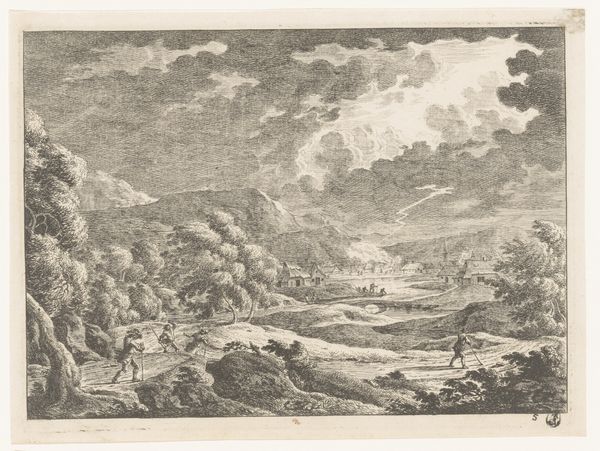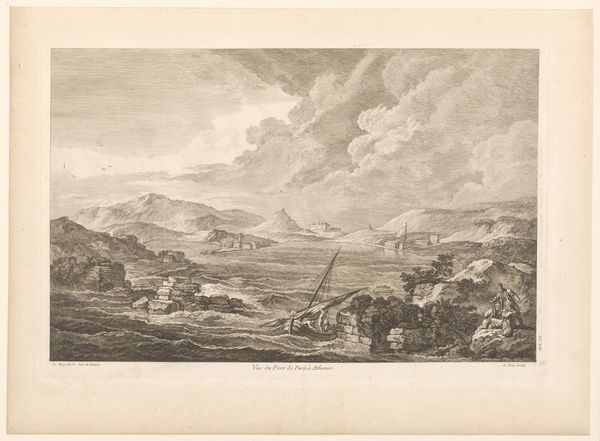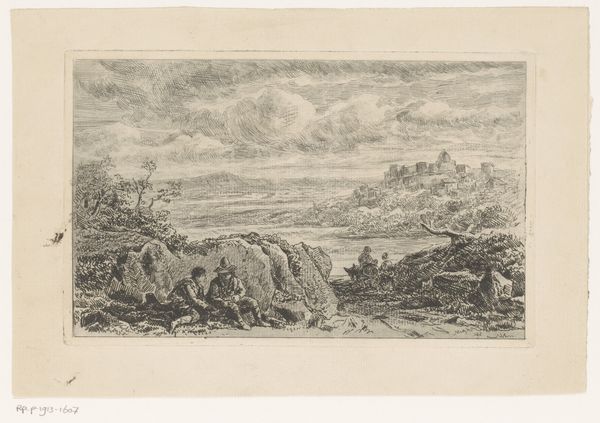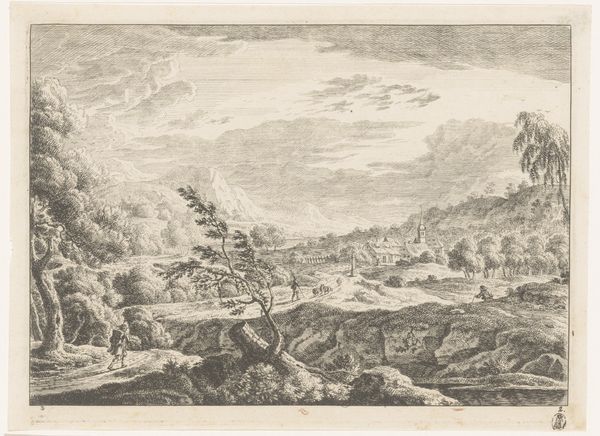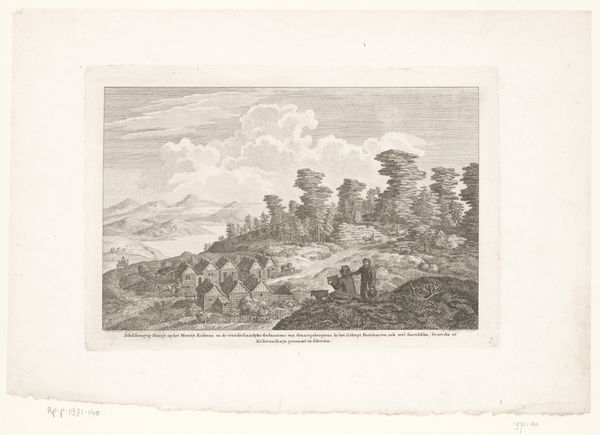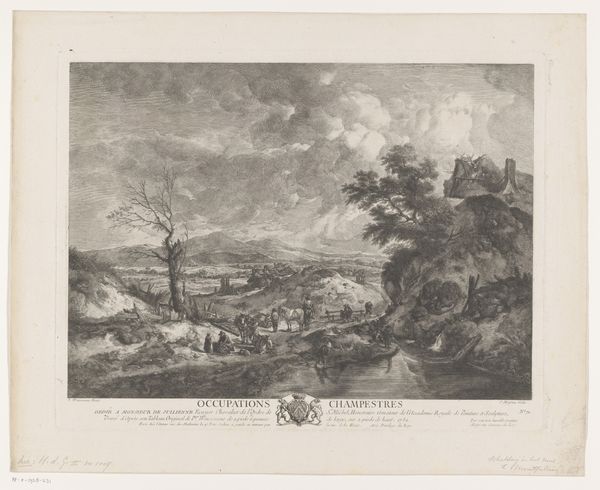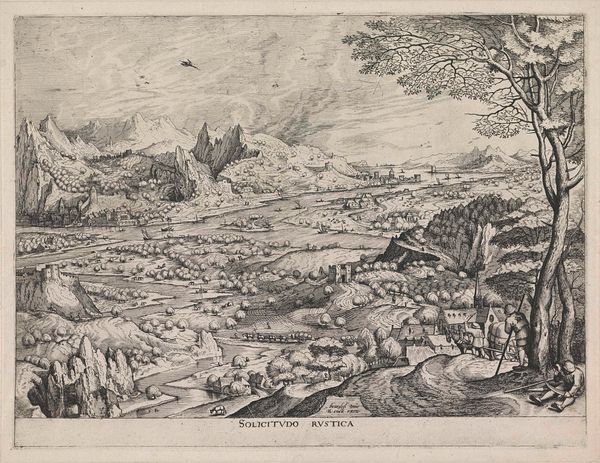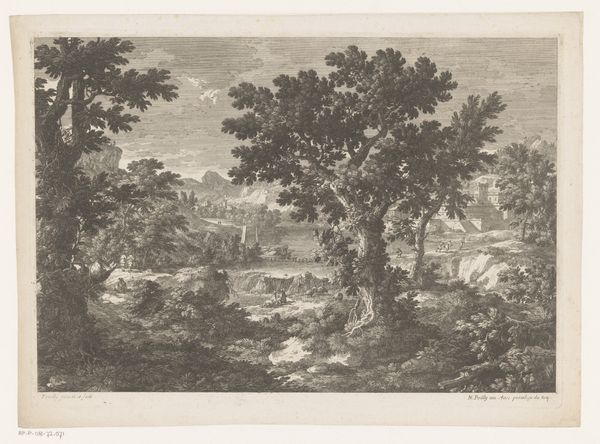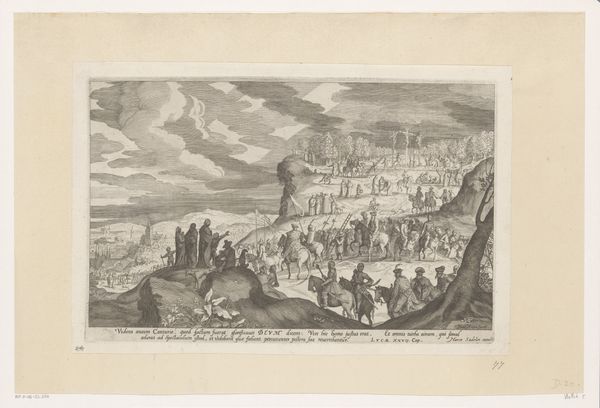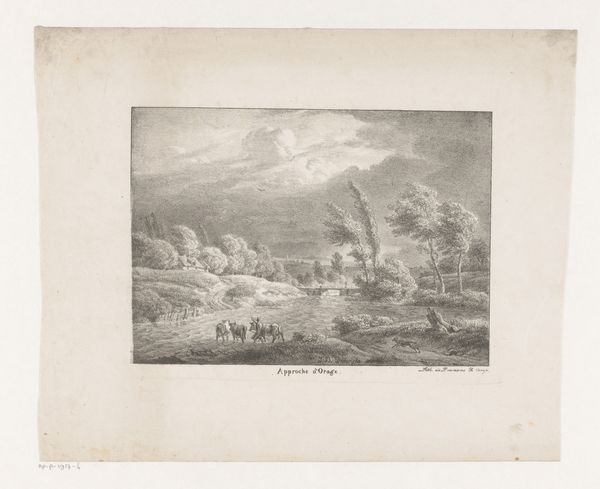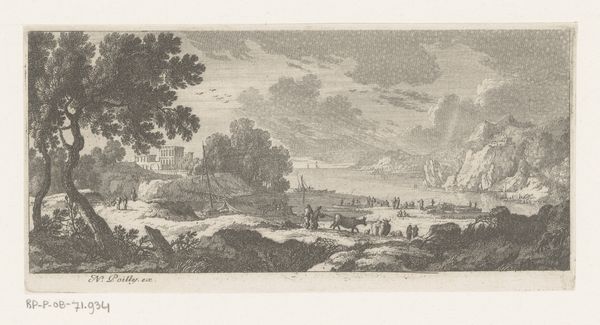
print, etching, engraving
#
baroque
# print
#
etching
#
old engraving style
#
landscape
#
engraving
Dimensions: height 310 mm, width 467 mm
Copyright: Rijks Museum: Open Domain
Curator: Here we have "View of a Hilly Landscape with Ruins," a 1758 etching and engraving by Jacques Philippe Le Bas, housed here at the Rijksmuseum. It depicts a pastoral scene, complete with ruins in the foreground. Editor: My first thought is how dramatic the composition is. The strong contrast between the light, almost radiant sky, and the shadowy foreground immediately pulls you in. There's something almost theatrical about the arrangement of the ruins. Curator: That drama definitely aligns with the conventions of landscape art in the mid-18th century, yet it's worthwhile to consider the societal implications reflected through Le Bas' choice of subject matter. Ruins often spoke to the impermanence of power and the cyclical nature of history—a not-so-subtle commentary on shifting socio-political landscapes. Editor: Right, the "memento mori" for empires, if you will. But the etching and engraving process itself is key here, isn’t it? Think about the labor, the skilled craft involved in creating this kind of reproducible image. It makes you consider how landscape and ruinscapes become commodified, visualized for a broader public to consume. Curator: Exactly. And looking at the figures included, almost as an afterthought it would seem, they are reminders that land has always been a site of labor. It also prompts questions regarding access and ownership. How did these visual representations play into colonial and class power dynamics of the era? Who had access to this landscape? Whose labor made it legible? Editor: And who benefits from seeing it reduced to ink on paper? But, back to the materiality—the line work is fascinating. Notice how Le Bas uses different techniques to create a sense of depth, from the delicate lines of the sky to the rougher textures of the ruins themselves. There’s a real control of process that really draws attention to itself. Curator: Absolutely. It also creates an interesting tension between the idealised pastoral scene and the reality of ruin and decay. Editor: Ultimately, Le Bas’ print reveals the many levels of making—from material means of creation to larger social processes of both the subject and art objects themselves. Curator: Agreed. Examining both allows a richer appreciation of the work and its place in shaping the broader understanding of power, labor, and access to the landscapes being depicted.
Comments
No comments
Be the first to comment and join the conversation on the ultimate creative platform.
